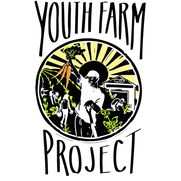 Posted Wednesday, June 12, 2019 7:56 am on TOMPKINS WEEKLY Christa Nunez, Youth Farm ProjectThe Fresh Snack Program provides fresh, healthy fruit and vegetable snacks to elementary schools in the Ithaca City School District. We do this in order to establish healthy eating habits that may last a lifetime. Our goal is to make the preparation, sharing and eating of fresh fruits and vegetables part of the daily classroom routine so that the students can enjoy learning together in their classrooms in more deeply enriching and healthful ways. Back in 2009, Amie Hamlin at The New York Coalition for Healthy School Food decided to pilot a private version of the very successful federal Fresh Fruit and Vegetable Snack Program. The reason we created a private version of a federal program is because federal funding is limited, and only the most economically disadvantaged schools in each state receive funding for the federal program. However, many schools have a high percentage of economically disadvantaged students that do not qualify for the Fresh Snack Program. Every student can benefit from the Fresh Snack Program, so even schools that do not have a high rate of economically disadvantaged students benefit from this type of program. In 2016 the Fresh Fruit and Vegetable Snack Program became a program of the Youth Farm Project and simplified its name to the Fresh Snack Program. Today 5 out of 8 elementary schools in the Ithaca City School District receive fresh snacks in every classroom 2-3 days per week. We knew that to do this the right way, we had to get as serious about what the kids ate as we were about their reading skills. It’s important to consider the whole child, and food is a central part of this. What kids put into their bodies is crucial to their growth as humans, and has long term impacts. Most children do not get enough fresh fruits and vegetables in their diet. The addition of healthy plant foods in the classroom and the absence of other less healthy foods provides children with an opportunity to eat fruits and vegetables that they might not otherwise eat. What we found out is that, in the captive environment of a classroom, children will eat fruits and vegetables, even if they previously would not. The healthier options they were offered, fruits and vegetables became the accepted norm. Children were encouraged by their classmates and teachers, and classmates and teachers served as role models. Contrary to what some adults thought would happen - children in the program eat raw kale, bok choy, beets, turnips, and other vegetables – with no dressing. They loved it then, and they love it now, ten years later. Our program shows that children will joyfully eat fruits and vegetables, and most importantly, we have learned that this has impacted their eating habits at home and that many students have internalized and can articulate the fact that eating fresh fruits and vegetables actually makes them feel better. We found this out when teachers reported that students coming back from weekends and vacations reported missing their fruits and vegetables, and just not feeling the same without them. You can learn more about the Fresh Snack Program by visiting youthfarmproject.org. Originally, students and teachers were served three different fresh fruits in the morning and three different vegetables in the afternoon. That was a huge effort, and in order to save time, we switched to two fruits and two vegetables per day for two to three days per week. Our program manager at the time, Vanessa Wood, suggested offering one fruit and one vegetable in the morning, and one fruit and one vegetable in the afternoon. This turned out to be a great idea and seemed to result in greater consumption. Whenever possible, the produce served was organic and/or came from local farms. Each day, teachers received what we call “Fresh Bites”, information about the fruits and vegetables served that day, including where they were grown and whether they are organic. At the end of each week, we survey teachers and cafeteria staff about the quality and quantity eaten enjoyed by the children of each fruit served. We use that data to hone and better tool the program to serve the tastes and overall health and enjoyment of the students. We know that if children become comfortable in enjoying healthy foods, they will create avenues for themselves to continue to do so into adulthood. In developing their palates in delicious, naturally healthy and Earth-friendly ways, we create sustainable lifestyles that boost the quality of life for children for generations to come. Program Goals • Increase consumption of fruits and vegetables. • Decrease the consumption of junk food. • Increase knowledge of different fruits and vegetables as well as their physiological and environmental benefits. • Increase understanding that fruits and vegetables make young bodies feel good - better than eating junk food snacks. It is our hope that this program will help contribute to changes over time that will lead to lower rates of childhood obesity, behavioral problems, learning barriers, and long-term diet-related diseases. The Fresh Snack Program is a program of the Youth Farm Project, a project of the Center For Transformative Action. Original article: http://tompkinsweekly.com/stories/the-fresh-snack-program-celebrates-10-years,2678 Comments are closed.
|
Archives
June 2019
Categories |
The Youth Farm Project | 24 Nelson Road, Ithaca, NY 14850 | [email protected]

 RSS Feed
RSS Feed